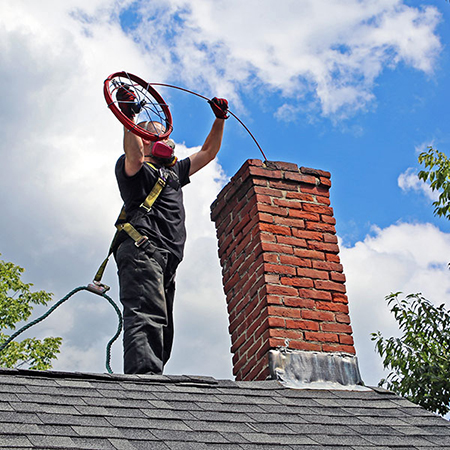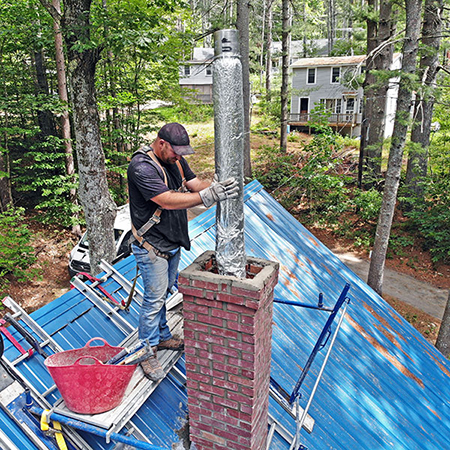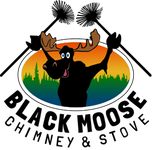 Just to look at it, you wouldn’t think a chimney is all that complicated. It’s just a brick-housed channel for smoke to go up, right? Well, partially right. The fact is, a chimney system contains many parts and components that must work properly to prevent water and other types of damage including fires. Here are a few things you should know about your chimney system.
Just to look at it, you wouldn’t think a chimney is all that complicated. It’s just a brick-housed channel for smoke to go up, right? Well, partially right. The fact is, a chimney system contains many parts and components that must work properly to prevent water and other types of damage including fires. Here are a few things you should know about your chimney system.
Chimney/fireplace dampers
Throat dampers are located just above the fireplace, although some systems have a damper that seals at the top of the flue. A damper has a couple important jobs:
- Open: allows air to circulate from the home into the firebox and up the chimney for proper drafting
- Closed: prevents air from escaping or getting into the home when the fireplace is not in use. A damper also keeps unwanted critters who get into your chimney from getting into your house.
Smoke chamber
Above the throat damper is the smoke chamber, which channels smoke from the fireplace up into the chimney. Smoke chambers need smooth surfaces so smoke and combustion gasses can exit the firebox. Parking is the name for the work that smooths out the chamber’s surfaces. Fires can easily start in smoke chambers that are never inspected and worked on.
Smoke shelf
The smoke shelf sits between the smoke chamber and the firebox. Its purpose is to collect small pieces of debris and water that have gotten into the chimney. The smoke shelf helps with the transition of smoke and works to prevent downdrafts from blowing into your home.
Chimney flue
The flue the proper name for the passageway inside the chimney through which smoke, gasses and air move. A clean flue makes drafting efficient. A flue blocked with excess creosote and soot or outside debris such as leaves, twigs and the nests of small animals can’t draft well and is more likely to start a chimney fire.
Chimney liner
 Many flues contain a liner made of steel, tile or a poured-in-place compound. In addition to providing a smooth path for venting, chimney liners protect the interior chimney masonry and adjacent materials of the house itself from intense heat and damaging smoke when a fire is burning. A compromise in the chimney liner is one of the key problems chimney inspectors look for.
Many flues contain a liner made of steel, tile or a poured-in-place compound. In addition to providing a smooth path for venting, chimney liners protect the interior chimney masonry and adjacent materials of the house itself from intense heat and damaging smoke when a fire is burning. A compromise in the chimney liner is one of the key problems chimney inspectors look for.
Chimney chase top
Chimneys that are made in a factory usually include a chase top, which serves as a shield at the top of the chimney to block water from rain and snow as well as various debris.
Chimney cap
All chimneys that are built on-site should have a chimney cap, which functions similar to a chimney chase. Chimney caps are designed to allow smoke and gasses to escape the flue while keeping rain and debris out and at the same time keeping fiery embers from escaping the chimney and landing on your roof or in your yard.
Chimney crown
The chimney crown is the cement top that seals off everything except the flue opening. Chimney crowns protect other materials of the chimney from water damage and deterioration. Although prone to cracking after years of use, the life of a chimney crown can be extended by coating it with a specialized waterproof sealant.
The value of regular chimney inspections & cleaning
While chimneys and their components are built to last, they won’t last forever. By scheduling regular chimney inspections, you can spot early signs of trouble with the masonry structure or any of its components and have the necessary repair work performed. Annual chimney sweep services will keep your chimney from building up excess flammable creosote and obstruction-causing debris. For all your chimney sweep, chimney inspection and chimney repair needs, Black Moose Chimney & Stove of Antrim, NH, is standing by to help. Call us today at (603) 525-7905.


